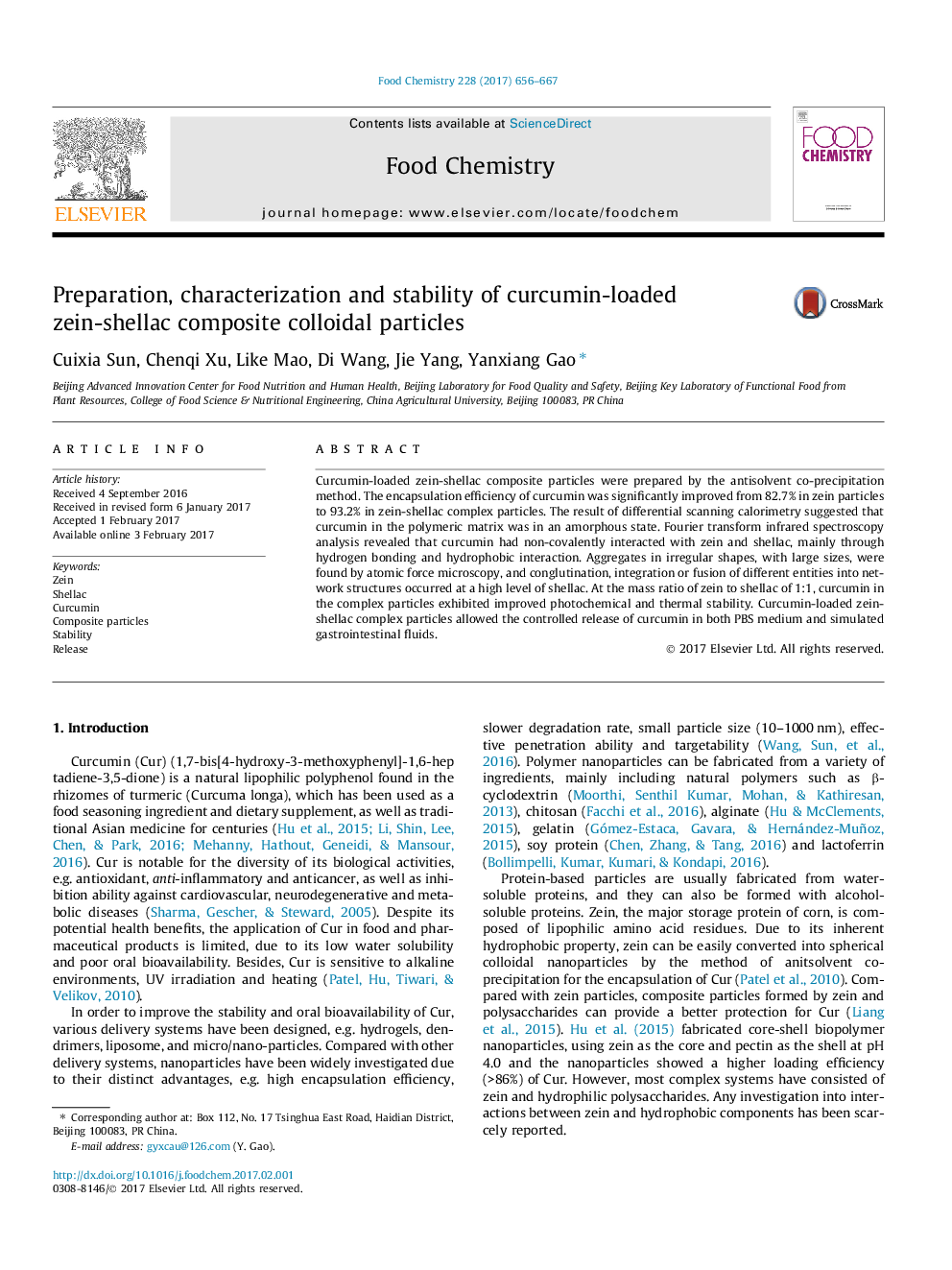| کد مقاله | کد نشریه | سال انتشار | مقاله انگلیسی | نسخه تمام متن |
|---|---|---|---|---|
| 5133885 | 1492064 | 2017 | 12 صفحه PDF | دانلود رایگان |

- Curcumin-loaded zein-shellac composite particles (Z-S/Cur) were fabricated at pH 8.0.
- Z-S/Cur complex was mainly formed by hydrogen bonds and hydrophobic effects.
- Cur in Z-S complex matrix exhibited great photochemical and thermal stability.
- Z-S complex provided the great sustained release property of Cur.
Curcumin-loaded zein-shellac composite particles were prepared by the antisolvent co-precipitation method. The encapsulation efficiency of curcumin was significantly improved from 82.7% in zein particles to 93.2% in zein-shellac complex particles. The result of differential scanning calorimetry suggested that curcumin in the polymeric matrix was in an amorphous state. Fourier transform infrared spectroscopy analysis revealed that curcumin had non-covalently interacted with zein and shellac, mainly through hydrogen bonding and hydrophobic interaction. Aggregates in irregular shapes, with large sizes, were found by atomic force microscopy, and conglutination, integration or fusion of different entities into network structures occurred at a high level of shellac. At the mass ratio of zein to shellac of 1:1, curcumin in the complex particles exhibited improved photochemical and thermal stability. Curcumin-loaded zein-shellac complex particles allowed the controlled release of curcumin in both PBS medium and simulated gastrointestinal fluids.
Journal: Food Chemistry - Volume 228, 1 August 2017, Pages 656-667